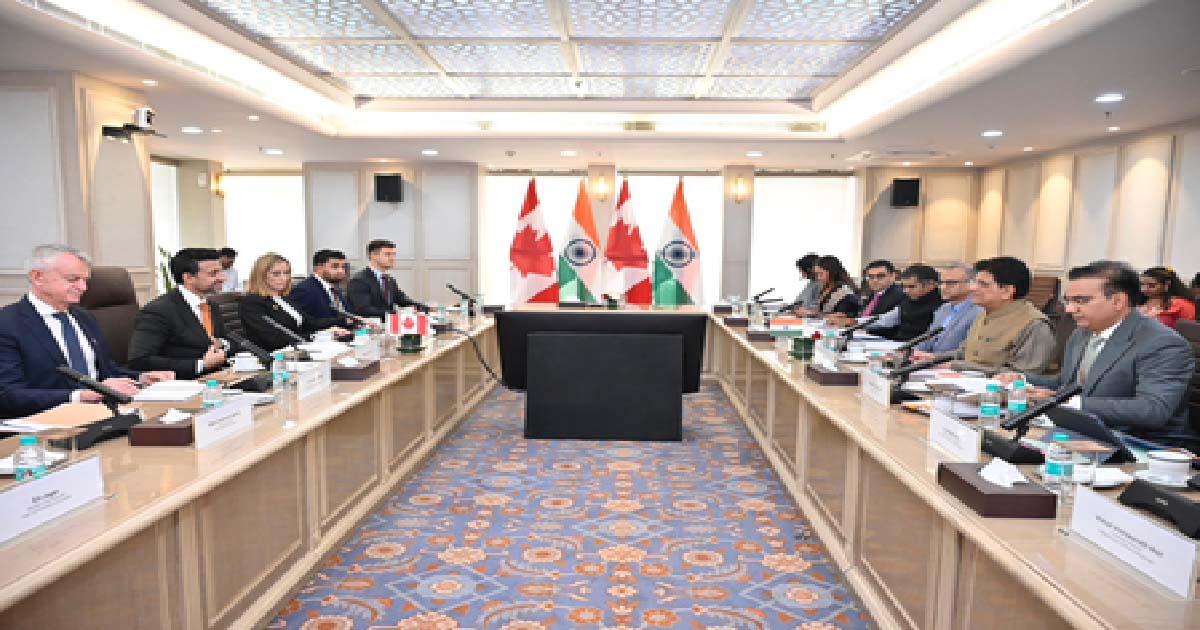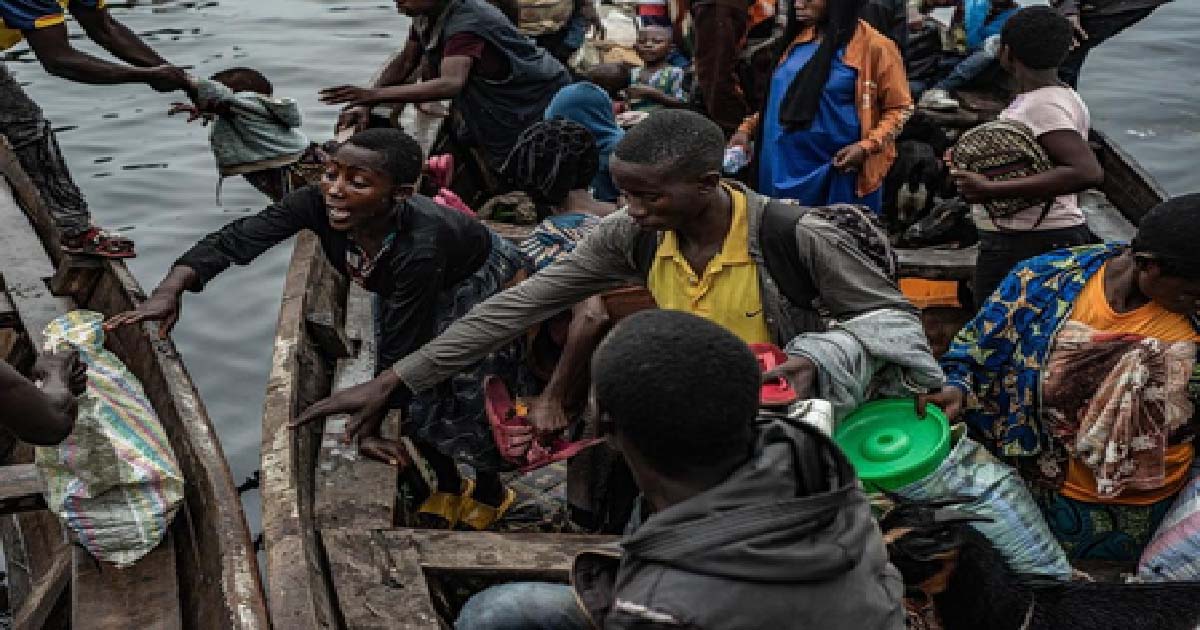International News
‘Pak should also lay claim on Rishi Sunak because his grandparents were from Gujranwala’
Former British Chancellor Rishi Sunak is set to make history by becoming the first Hindu and first person of colour to become the UK’s next Prime Minister.
The 42-year-old was born in Southampton to Hindu-Punjabi parents but his grandparents were born and raised in the city of Gujranwala in Punjab province, Geo News reported.
Sunak, in an odd way, is both an Indian and a Pakistani by heritage. He is a practising Hindu and takes his Commons oath on the Bhagavad Gita.
His paternal grandfather Ramdas Sunak left Gujranwala to work as a clerk in Nairobi in 1935. His wife, Suhag Rani Sunak, moved to Delhi first from Gujranwala, along with her mother-in-law, before travelling to Kenya in 1937 to join her husband.
Ramdas and Suhag Rani had six children, three sons and three daughters.
Rishi Sunak’s father Yashveer Sunak was born in 1949 in Nairobi. He arrived in Liverpool in 1966 and went on to study medicine at the University of Liverpool. Yashveer married Usha in Leicester in 1977.
Three years later, Rishi was born in 1980 in Southampton. His parents ran a successful pharmacy business till their retirement.
“The Sunaks are a Punjabi Khatri family from Gujranwala, now in Pakistan,” said a Twitter user, adding: “Ramdas Sunak, Rishi’s paternal grandfather, left Gujranwala to work as a clerk in Nairobi in 1935.”.
As soon as it became clear that Rishi will become the next Prime Minister, Pakistani netizens on Twitter laid claim to the incoming British leader.
“I think Pakistan should also lay claim on Rishi Sunak because his paternal grandparents were from Gujranwala who from there migrated to Kenya and then to Britain,” one user tweeted.
Another said: “Wow! What a tremendous achievement. A Pakistani has now ascended to the highest office in England. Anything is possible if you believe.”
Some suggested that it was a moment of joy for broth India and Pakistan.
“Going to bed in the US with hopes that a Punjabi from Gujranwala will be the prime minister of the UK in the morning! Both Pakistan and India should be jointly proud of this moment!” one user said.
“Since Gujranwala is in Pakistan, anyone who belonged to this city even 100 years ago is a Pakistani today,” tweeted another.
Gujranwala, known for its good food and culture of wrestling, is located about 1.5 hours from Lahore.
Before partition, when Rishi’s grandparents used to live in Gujranwala, the city used to be a locality surrounded by at least seven gates, used as entry and exit points to it, Geo News reported.
Today’s Gujranwala is a congested, densely populated city surrounded by narrow streets, filled with shops of clothes, jewellery, electronics and others. Before partition, the city had a large and thriving Hindu community.
When the communal riots erupted in British India (today’s India and Pakistan), many Hindus, Sikhs and Muslims were forced to migrate and relocate. Many Muslim and Hindu families left today’s India and Pakistan for Kenya and other countries, Geo News reported.
In Britain, Asian and rights groups have hailed the rise of Rishi as hopeful and the dawn of a new era.
Sunder Katwala, director of British Future, said: “Rishi Sunak becoming the first British Indian Prime Minister is a historic moment. This simply would not have been possible even a decade or two ago. It shows that public service in the highest office in Britain can be open to those of all faiths and ethnic backgrounds.”
The 1928 Institute, a University of Oxford-backed British Indian think tank, said: “It is incredible to see a British Indian as PM. Many of our grandparents were British subjects and now to see someone of Indian heritage in the UK’s highest office is truly wonderful.
“It shows how our community has come a long way and will be an inspiration for the next generation, although some will still attack Rishi Sunak for his heritage. Breaking this glass ceiling is a major achievement but we need more diversity in our government. We will judge Rishi by his policies and hope that our shared values across the diaspora such as seva, particularly with regards to minority and marginalised communities, are part of his leadership.”
Business
India, Canada discuss ways to boost bilateral trade, promote investments

New Delhi, Nov 13: Commerce and Industry Minister Piyush Goyal and Maninder Sidhu, Canada’s Minister of International Trade, discussed ways to further boost bilateral trade and promote investments, it was announced on Thursday.
Sidhu is in India to find opportunities to advance trade and investment linkages between the two nations.
“It was a pleasure to co-chair the 7th India-Canada Ministerial Dialogue on Trade and Investment as part of the New Roadmap 2025 along with @MSidhuLiberal, Canada’s Minister of International Trade,” Goyal posted on the X social media platform.
The minister further stated that they discussed “avenues to strengthen bilateral trade, promote investments and deepen cooperation between our countries”.
During his India visit, Sidhu is set to promote Canada’s commitment to supporting and growing the well-established commercial ties shared by Canada and India, including artificial intelligence, clean technology and digital industries, and explore new opportunities for partnerships that benefit workers and businesses in both countries.
“This visit to India will reinforce Canada’s commitment to diversifying our trade relationships and attracting new investment,” an official statement quoting Sidhu said. “As one of the fastest-growing major economies, India offers significant opportunities for Canadian businesses and workers. Our commercial ties continue to expand — bilateral trade surpassed $30 billion in 2024 — and there is even greater potential ahead,” the statement added.
India is a key partner as Canada strengthens its economic links in the Indo-Pacific region under a comprehensive strategy for the region. In 2024, India was Canada’s seventh-largest goods and services trading partner, with two-way trade valued at $30.9 billion.
Meanwhile, External Affairs Minister (EAM) S. Jaishankar and his Canadian counterpart, Anita Anand, held discussions on strengthening cooperation across key sectors, including trade, energy and security. Both leaders met on the sidelines of the G7 Foreign Ministers’ Meeting in Niagara.
EAM Jaishankar also praised the progress made under the New Roadmap 2025, aimed at enhancing bilateral ties between India and Canada and expressed hope for rebuilding a stronger partnership.
Crime
Banned drugs worth Rs 45 crore smuggled from Myanmar seized in Mizoram; two held

Aizawl, Nov 13: The Assam Rifles, in a joint operation with Mizoram Police, recovered highly addictive Methamphetamine tablets valued at Rs 45 crore from Saitual district and arrested two drug peddlers, officials said on Thursday.
A defence spokesman said that based on specific intelligence about the movement of drugs on the Ngopa-Saitual road in northern Mizoram’s Saitual district, a joint operation was launched on the intervening night of Wednesday and Thursday.
The team of Assam Rifles established a vehicle check post, which intercepted the suspected vehicle carrying drugs at Ngopa.
During the search operation, 15 kg of banned Methamphetamine tablets worth Rs 45 crore were recovered from two persons — Rabizul Haq and Naasiruddin, both residents of Barpeta in western Assam.
Recovered contraband, smuggled from Myanmar, along with apprehended individuals and their vehicle, were handed over to the Saitual district Police for detailed investigation and further legal proceedings.
As part of its continuous efforts to curb the spread of the drug menace in Mizoram, the Assam Rifles conducted yet another successful anti-narcotics operation, the spokesman said.
Meanwhile, the Assam Rifles, in a joint operation with Assam Police, recovered heroin valued at Rs 4.65 crore from near Jhujang Pahar in Cachar district of southern Assam on November 11.
The November 11 drug seizure took place within two days in the same Cachar district.
The Assam Rifles, in a similar joint operation with Assam Police, recovered methamphetamine tablets worth Rs 6 crore on November 9. The banned methamphetamine tablets, also known as Yaba or party tablets, contain a mixture of methamphetamine and caffeine and are commonly referred to as the ‘crazy drug’.
The highly addictive drugs are very popular among drug addicts in India, Bangladesh and the neighbouring countries.
Notably, Myanmar shares a 1,643-km-long unfenced border with four Northeastern states — Mizoram, Arunachal Pradesh, Manipur and Nagaland — which serve as a key transit point for drugs, particularly heroin and methamphetamine tablets.
At least six of the 10 districts of Mizoram — Champhai, Siaha, Lawngtlai, Hnahthial, Saitual and Serchhip — share a 510-km border with Myanmar. Mizoram, Manipur, Tripura and southern Assam have turned into major corridors for drug smuggling from Myanmar, with the illegal consignments being ferried to other parts of the country and abroad.
International News
Nearly 25 million people facing acute food insecurity in Congo: UN

United Nations, Nov 13: Nearly 25 million people, over 20 per cent of the population, are facing high levels of acute food insecurity in the Democratic Republic of the Congo (DRC), a UN spokesperson said.
The DRC remains one of the countries most affected by food insecurity, with the situation particularly severe in the east, said Stephane Dujarric, spokesperson for the UN secretary-general, at a daily briefing on Wednesday.
According to the latest Integrated Food Security Phase Classification analysis, the number is projected to rise to nearly 27 million people in the first half of 2026, he said.
Dujarric said the UN Office for the Coordination of Humanitarian Affairs (OCHA) remains deeply concerned about continued attacks against civilians in Beni and Lubero territories in North Kivu and also in Ituri province, with more than 1,000 people reportedly killed in the two provinces since the beginning of this year.
The impact on health services has been devastating, with at least six facilities attacked since the beginning of 2025 and a total of at least 28 health sites affected by armed attacks since 2024, said the spokesperson.
He said OCHA reiterated its call on all parties to respect international humanitarian law and ensure the protection of civilians and civilian infrastructure.
Since January, the security situation in eastern DRC has worsened sharply amid renewed fighting involving the March 23 Movement rebel group, which seized several key towns, including Goma and Bukavu, Xinhua news agency reported.
Humanitarian agencies say the escalating violence has displaced hundreds of thousands of civilians, deepening an already dire crisis.
Earlier on October 14, the government of the DRC and the March 23 Movement (M23) rebel group had signed an agreement in Doha to establish a ceasefire monitoring and verification mechanism, under the facilitation of Qatar.
-

 Crime3 years ago
Crime3 years agoClass 10 student jumps to death in Jaipur
-

 Maharashtra1 year ago
Maharashtra1 year agoMumbai Local Train Update: Central Railway’s New Timetable Comes Into Effect; Check Full List Of Revised Timings & Stations
-

 Maharashtra1 year ago
Maharashtra1 year agoMumbai To Go Toll-Free Tonight! Maharashtra Govt Announces Complete Toll Waiver For Light Motor Vehicles At All 5 Entry Points Of City
-

 Maharashtra1 year ago
Maharashtra1 year agoFalse photo of Imtiaz Jaleel’s rally, exposing the fooling conspiracy
-

 National News1 year ago
National News1 year agoMinistry of Railways rolls out Special Drive 4.0 with focus on digitisation, cleanliness, inclusiveness and grievance redressal
-

 Maharashtra12 months ago
Maharashtra12 months agoMaharashtra Elections 2024: Mumbai Metro & BEST Services Extended Till Midnight On Voting Day
-

 National News1 year ago
National News1 year agoJ&K: 4 Jawans Killed, 28 Injured After Bus Carrying BSF Personnel For Poll Duty Falls Into Gorge In Budgam; Terrifying Visuals Surface
-

 Crime1 year ago
Crime1 year agoBaba Siddique Murder: Mumbai Police Unable To Get Lawrence Bishnoi Custody Due To Home Ministry Order, Says Report






















